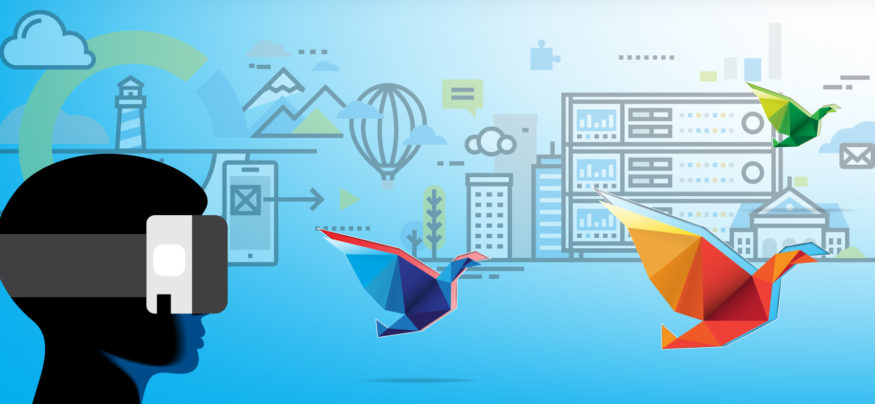Virtual reality offers a fundamental shift in the dynamics of human perception. With a 3D, immersive experience, we can for the first time “be there” without being there. We can “handle” objects without touching them.
This virtual world opens up a wealth of possibilities in the realm of interactive education, going so far as to help high schoolers find the right college through virtual tours. In the most basic sense, virtual reality in education appeals to a reality already familiar to most teachers — people learn differently. Some can read about a subject and understand it, while others have to talk it through. Then there are the sensory learners — those who take in information best through sound, feel and vision. It is to this group in particular that VR offers an advantage.
Teachers looking to round out their repertoire of tactics and techniques can use VR headsets, such as the Gear VR, to offer students a new suite of experiences with a technology that’s both affordable and easy to implement. Here are a few examples of the ways in which VR is changing the face of education.
Science
For many younger learners, science is largely a textbook-based affair. In between paragraphs, they may encounter charts, graphs and the occasional illustration, but by and large science remains an array of abstract concepts. The notable exceptions, such as the ubiquitous fetal pig and frog dissections for high schoolers, are helpful in introducing a more tactile element to the learning experience, but they’re limited in scope.
An immersive experience in a virtual reality classroom, however, would be a fundamentally different proposition. The study of anatomy could go beyond frogs to embrace large mammals and even humans, whose computer-imaged insides could be examined in detail, giving students an up-close view of intricate anatomical workings never before available outside a medical school campus.
Students could also view the night sky from all angles at any time of day, or observe firsthand the impact of changing weather patterns by standing in the eye of a virtual hurricane. In a VR classroom, students can explore a range of scientific phenomena that otherwise would be inaccessible.
Geography and Culture
VR can help geography students by putting them in the middle of the places they’re studying. With a well-crafted virtual environment, students studying Chicago or Athens or Moscow could tour these cities at will. Unlike a static film presentation, VR would allow a student to create a self-guided experience, exploring side streets, markets, public spaces and residential neighborhoods.
When moving through these virtual cities, students can experience up close the cultural lives of their inhabitants. They could hear the local language as it’s really used, rather than in a contrived classroom setting, adding a level of cultural enrichment that most teachers would be hard-pressed to achieve in any other format.
The lesson continues outside the cities. It’s one thing to read about a mountain range or a river, or even to see pictures. But an immersive experience can put the learner squarely in the middle of the geography they’re studying, with the ability to take in a true 360-degree view of every detail, including the sensation of motion. VR can thus put the student in places that have until now been inaccessible to most learners.
The Arts
At first glance, the arts would seem perfectly suited to a digital classroom setting, as the internet offers a nearly endless catalog of pictures and music for students.
However, virtual reality extends this prospect exponentially by allowing students to view art in context: A student striding the halls of a virtual Louvre may encounter a van Gogh just a few steps away from an abstract expressionist masterpiece. The juxtaposition, achieved through a VR presence, offers an entirely new view of the works.
The same holds true for music. Seated in a virtual reality concert hall, a student can turn their attention to each of the players in succession, following the emergence of sound as it reverberates around a unique physical space.
As schools increasingly turn to technology to help improve students’ learning, VR will prove to be a game changer. As teachers experiment with the possibilities of high-fidelity, 3D learning experiences, new content will become available and, most importantly, new methods of teaching will emerge to engage students from across the full spectrum of learning styles.
For more ideas on how to integrate technology into your classroom, check out our education solutions page.







